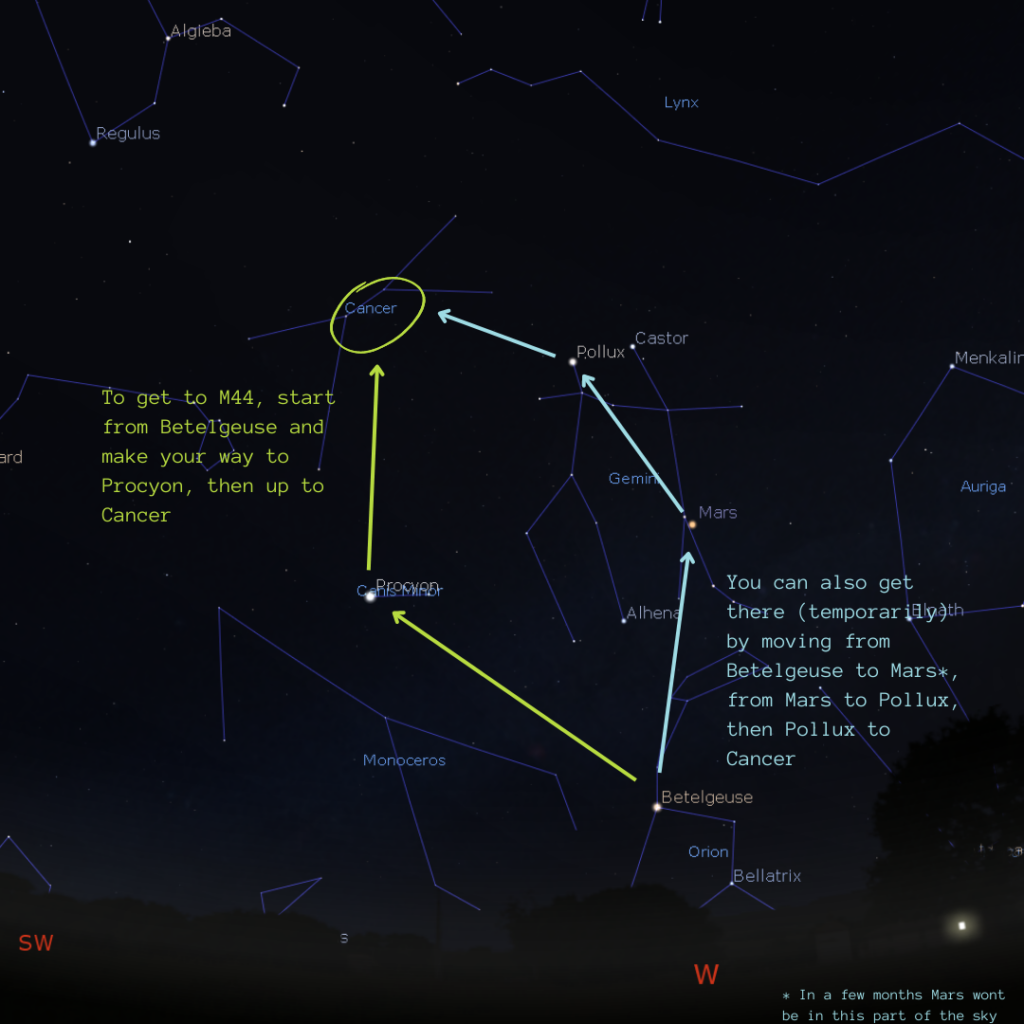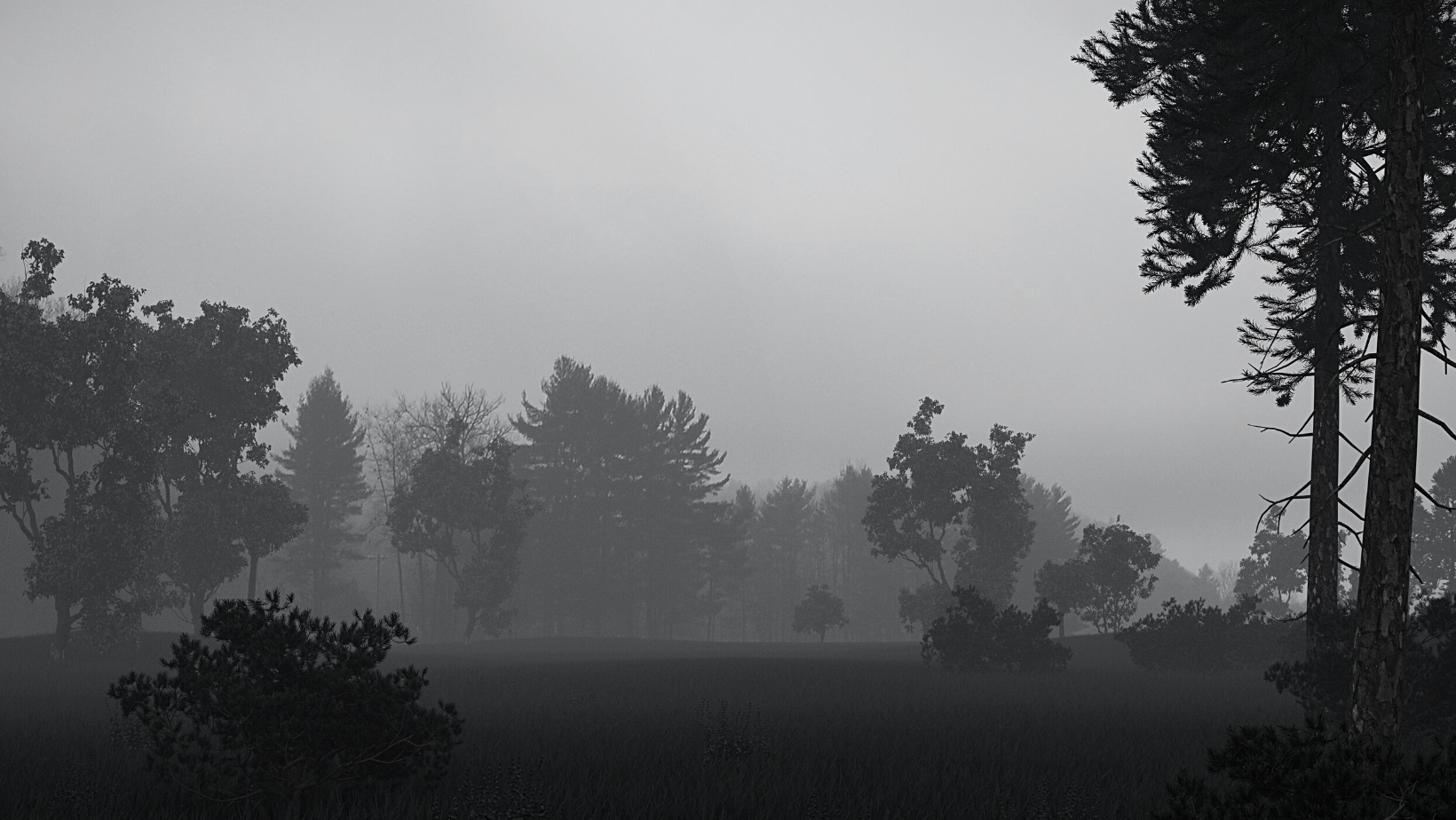Happy Wednesday, space friends! For the week of April 12th 2023 we will be looking for BEES!
The Beehive Cluster (M44) is a cute lil cluster of about 1000 stars right in the middle of the constellation Cancer. This stellar swarm is one of the closest star clusters to us and its stars are all fairly young at millions of years old instead of billions (like our sun). The stars of the Beehive cluster are thought to have been born along with the stars of the Hyades cluster in Taurus.

The Beehive cluster is also known as Praesepe which means crib or manger in Latin. While the constellation Cancer is itself fairly faint and unremarkable compared to neighboring Gemini and Leo, the Beehive cluster is still pretty bright and easy to spot. At around magnitude 3, this cluster can be seen with the naked eye and is an especially nice target or binocular observing.
To find this stellar beehive, start from our old pal Betelgeuse from week 53. By our usual time of 10pm this bright red giant will be near the western horizon. From Betelgeuse make your way up to radiant Procyon from week 56. From Procyon keep moving up until you find a faint fuzzy cluster that spans about three full moons (1.5°) in the sky. It will be relatively parallel to Pollux from week 63.

Another way to find the Beehive Cluster is to move from Betelgeuse to Mars to Pollux and then from Pollux over to the Beehive Cluster. Mars won’t be in this same part of the sky all the time though since it moves through the sky much faster over time than the stars.
BUT WAIT, THERE’S MORE!

If you want a bonus side quest, make sure to go outside right after sunset. Look to the western horizon to catch Mercury. Mercury was just at greatest elongation yesterday, which means it was at its greatest distance from the Sun in the sky relative to us here on earth. Since Mercury is so close to the overwhelmingly bright Sun, it can be quite tricky to observe. That’s why the best time to view Mercury is when it’s farther away from the Sun. While greatest elongation was actually yesterday, tonight will still be a great time to catch this celestial psychopomp.

Let us know if you got to see the trickster and some bees tonight! Catch us on Instagram at @stargazingsidequest and @liminal.earth and on Mastodon at @wufo. We love to see your sky pics and contact sesh setups!
SOURCES
https://science.nasa.gov/m44-beehive-cluster
Sky pics are all screenshots from Stellarium.
